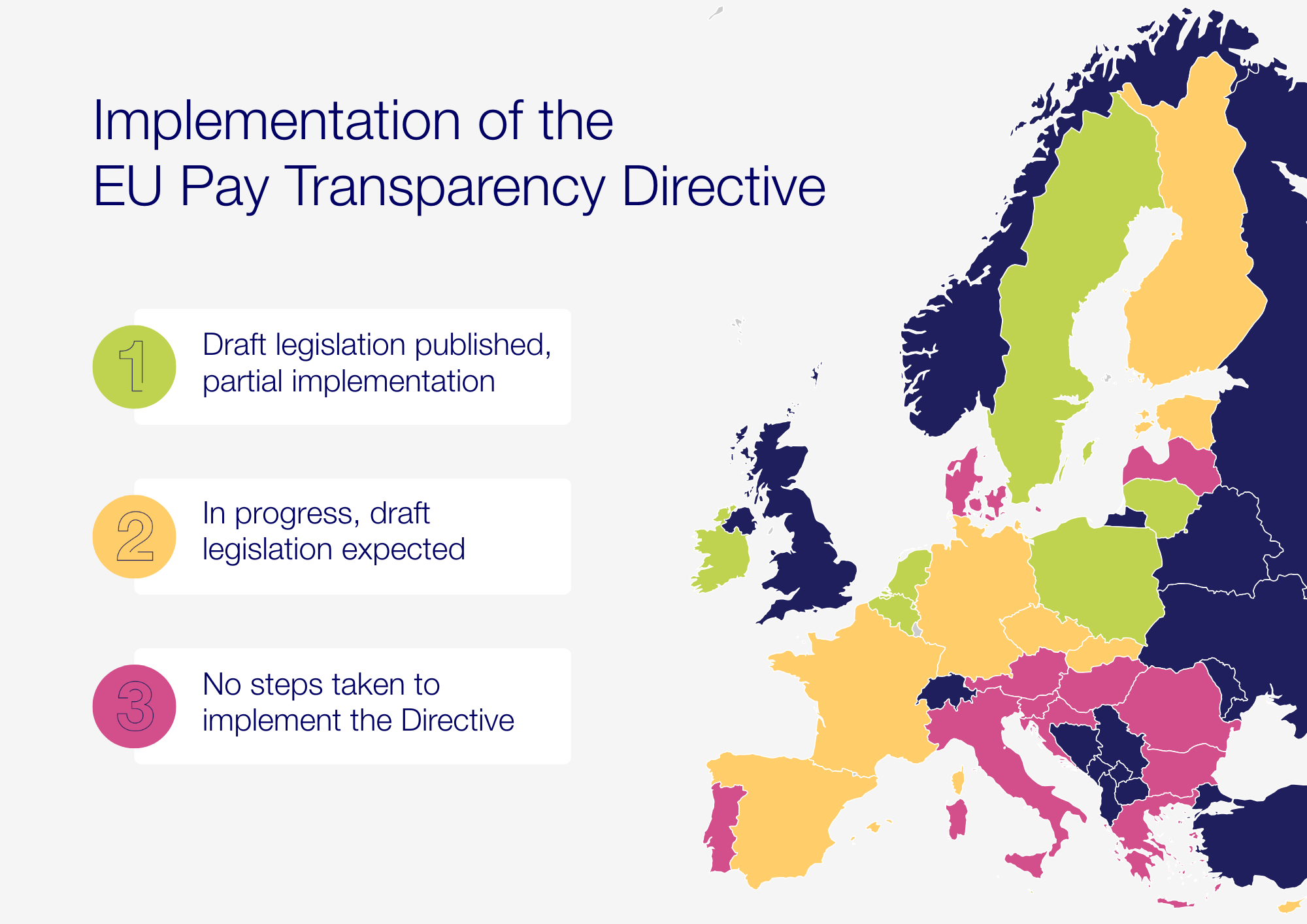With the June 7, 2026, deadline approaching, EU Member States are at different stages of implementing the Pay Transparency Directive, which aims to strengthen pay openness and gender equality across Europe.
Addleshaw Goddard has launched an Implementation Tracker, compiled in collaboration with partner law firms including Sorainen, offering a country-by-country overview of legislative progress. Our Baltic-wide Employment team contributed insights on Estonia, Latvia and Lithuania.
EU Pay Transparency Directive’s impact on employers
The EU Pay Transparency Directive, approved in 2023, is a significant step towards pay openness, transparency, and gender equality in Europe. It mandates companies across the EU to offer greater transparency to both employees and job seekers, aiming to help eliminate the gender pay gap through new pay transparency measures and comprehensive enforcement mechanisms.
Who is affected and how?
The Directive applies to all employers within the EU, regardless of company size. While specific provisions may be eased for smaller organisations, all employers must ensure their pay structures are objective, gender-neutral, and support open pay discussions. Employers should also begin preparing to meet the Directive’s reporting requirements.
When does it take effect?
Member States are required to transpose the Directive into national law by 7 June 2026. For some, this will mean introducing entirely new legislation on equal pay and transparency; others will need to strengthen existing laws to meet the standards set by the Directive.
Progress across the EU and the Baltic region
With the deadline approaching, implementation efforts vary across Member States and the Baltic region.

Estonia: Draft legislation was initially expected to be published by the Government by summer 2025, but no updates have been published. The revised timeline remains unclear.
Latvia: No transposition activity has been reported. Current pay reporting obligations apply only to the public sector, although legislation already requires pay transparency in job advertisements.
Lithuania: Existing laws partially reflect the Directive, requiring pay details in job postings, published remuneration policies, and the provision of gender pay gap data upon request. In May 2025, an initial draft law was published unofficially and later formally registered on 12 September. Key proposals include stricter rules for remuneration policies, a ban on salary history questions, monthly pay gap reporting through social security authorities, mandatory corrective action for gaps exceeding 5%, and the removal of salary data from confidentiality clauses.
For a detailed overview of each country’s progress, explore the EU Pay Transparency Directive Implementation Tracker.
Reach out to our experts
Organisations that take timely and proactive steps to prepare for the Directive will be well-positioned in a more transparent employment landscape and better equipped to manage potential risks.
Our Employment team is available to discuss how the Directive may affect your organisation and share insights on reviewing pay practices, recruitment procedures, and transparency measures.


